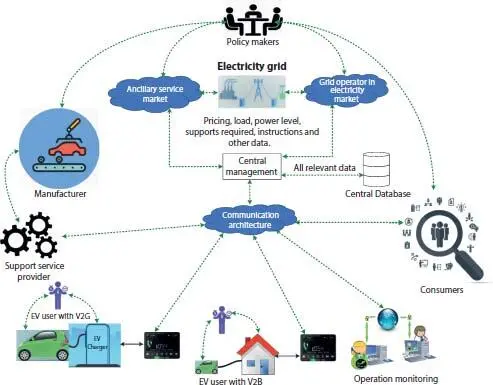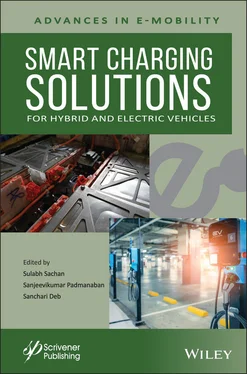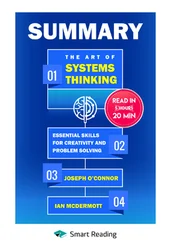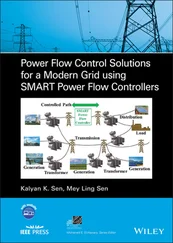Smart Charging Solutions for Hybrid and Electric Vehicles
Здесь есть возможность читать онлайн «Smart Charging Solutions for Hybrid and Electric Vehicles» — ознакомительный отрывок электронной книги совершенно бесплатно, а после прочтения отрывка купить полную версию. В некоторых случаях можно слушать аудио, скачать через торрент в формате fb2 и присутствует краткое содержание. Жанр: unrecognised, на английском языке. Описание произведения, (предисловие) а так же отзывы посетителей доступны на портале библиотеки ЛибКат.
- Название:Smart Charging Solutions for Hybrid and Electric Vehicles
- Автор:
- Жанр:
- Год:неизвестен
- ISBN:нет данных
- Рейтинг книги:4 / 5. Голосов: 1
-
Избранное:Добавить в избранное
- Отзывы:
-
Ваша оценка:
- 80
- 1
- 2
- 3
- 4
- 5
Smart Charging Solutions for Hybrid and Electric Vehicles: краткое содержание, описание и аннотация
Предлагаем к чтению аннотацию, описание, краткое содержание или предисловие (зависит от того, что написал сам автор книги «Smart Charging Solutions for Hybrid and Electric Vehicles»). Если вы не нашли необходимую информацию о книге — напишите в комментариях, мы постараемся отыскать её.
The most comprehensive and up-to-date study of smart charging solutions for hybrid and electric vehicles for engineers, scientists, students, and other professionals. Smart Charging Solutions for Hybrid and Electric Vehicles:
Smart Charging Solutions for Hybrid and Electric Vehicles — читать онлайн ознакомительный отрывок
Ниже представлен текст книги, разбитый по страницам. Система сохранения места последней прочитанной страницы, позволяет с удобством читать онлайн бесплатно книгу «Smart Charging Solutions for Hybrid and Electric Vehicles», без необходимости каждый раз заново искать на чём Вы остановились. Поставьте закладку, и сможете в любой момент перейти на страницу, на которой закончили чтение.
Интервал:
Закладка:

Figure 1.4 Communication between various entities in smart charging infrastructure.
Moreover, a higher transmission range, less impact from electromagnetic interference, and increased reliability due to lower bit error rates are a few other perks to using optical fiber. Apart from PLC and optical fiber, a digital subscriber line (DSL) can also be used, especially in home setups for smart charging. DSL does not require any sperate communication line, but instead uses telephone lines for data exchange [58].
Wireless communication setups are preferred in areas where connected devices are mobile. For example, in charging stations, the incoming and outgoing of EVs are uncertain. Hence, infrastructure developers prefer to use wireless communication technologies. Zigbee, WiFi, cellular network, WiMAX, and satellite networks are popular wireless technologies. The network used the most is called wireless LAN, which is a hierarchical mesh structure for data exchange [54, 58, 59].
Note that more communication channels and entities can be added appropriately.
1.5.5 Stakeholders
The previous subsections described the components which actively participate in the operation and management of smart charging systems. Some entities are involved mostly in the planning stages but are not involved in real-time control. Such entities are manufacturers of various products for the deployment of smart charging, the service providers who perform regular maintenance, and the policymakers who promote the deployment and usage of EVs and the smart charging infrastructure. All are components of the smart charging infrastructure. Each of these is described in the next subsections.
1.5.5.1 Policymakers
Policymakers are individuals or organizations who participate in discussions and policy design processes for smooth and firm implementation of an idea. In the case of smart charging, policymakers focus on increasing EVs utilization in the transportation sector. With increased utilization, the requirements of infrastructure for charging EVs should also be considered. Hence, research and studies are performed to frame policies that converse consumers to think, plan, and use EVs. Policymakers are one of the integral drivers of the paradigm shift in using EVs in the transportation sector.
An example of policy is the Faster Adoption and Manufacturing of (Hybrid &) Electric Vehicles (FAME) by the Department of Heavy Industries under the Union Ministry of Heavy Industries and Public Enterprises. The first phase of FAME, FAME I, was started in 2015 and completed on March 31st, 2019. FAME-II started on April 1st, 2019 and is planned to be completed by March 31st, 2022 [60, 61]. FAME aims to promote eco-friendly vehicles, including electric vehicles and hybrid vehicles, and EV buyers, increasing the demand and production of EVs. The promotion includes providing incentives to both the manufacturer and buyers by reducing taxes and electricity cost. Further, support to set up manufacturing plants for EVs and related technologies are also promoted.
1.5.5.2 Manufacturers
Manufacturers design, develop, and sell the products. In smart charging, the products include EVs, equipment to support power exchange between the grid and EVs, products that are required to develop the communication infrastructure, and the accessories to support the maintenance of all the products and equipment in the smart charging infrastructure. Manufacturers are provided support by policymakers in developing EV infrastructure subsidies for electricity cost, lease of land, and taxes.
1.5.5.3 Service and Support Providers
All the equipment and products used in smart charging need services, such as the internet and electricity, to operate. Further, regular maintenance to reduce the capital cost of replacement due to damage is required. Hence, service and support providers are an integral component. The manufacturer and policymakers consider inputs from service and support providers in both framing policies and manufacturing products. The manufacturer ensures that spare parts of their product are readily available to the support providers. The personnel involved is trained to check and repair by the manufacturers.
1.5.5.4 Consumers
Consumers are the front divers for the implementation of smart charging infrastructure. The demand for EVs and their supporting products and equipment is wholly dependent on consumers’ needs. Hence, the manufacturer, policymakers, and service providers do promotions, provide incentives, and assure consumers’ maturity and reliability. The consumers also draw constraints, such as charging speed, battery life, and cost of replacing batteries, before buying an EV. If the demand for a product by the consumers’ increases, it shows the technology’s acceptance [62, 63].
An appropriate business model with policies benefitting all the stakeholders and fulfilling consumers’ requirements will be needed for the implementation of smart charging [64].
1.5.6 Market
With the maturity in EV technologies and push of governments worldwide for e-mobility, the EV market has expanded in the past few years. Research to reduce range anxiety, enhance the trust of EV users, reduce the weight of the battery, and establish user-friendly charging stations are a few ways the EV and supporting equipment manufacturers are working to build a momentum of sales in the market. Oil and gas companies are also preparing to operate towards sustainable e-mobility. The smart charging infrastructure market is reported to segmented into EV sales, mobility services, electricity sales to charge EVs, installation and maintenance of charging infrastructure, operation of smart charging stations and the utility grid, and ancillary services [21, 65].
EV sales include the different types of EVs sold in the market, such as consumer vehicles, private vehicles, public transport service vehicles, and heavy vehicles. Mobility services include app development and management to provide services at the users’ fingertips, perform data collection and analysis to increase reliability in operation, EV fleet management, booking of slots, and much more. The market keeps evolving with competition between both well-known and emerging companies, each of them seeking to increase their share of the market.
1.6 Enablers of Smart Charging
Smart charging requires enablers to implement it. Consumers and technology are two important enablers. The consumers have a varied aspect of expectations and interpretation for any new technology released in the market. The success and failure of the product depends on the acceptance of consumers. On the other hand, recent times have experienced a rapid transition in technology with new products with desired functionalities released almost daily. The technology required for smart charging should add functionalities that make the system intelligent in operation. Artificial intelligence (AI) and data analytics, popularly called Big Data, are technology enablers [20, 66, 67].
When looking into EV technology, the driving range, charging speed, and availability of charging stations to charge while traveling are the three main constraints for large scale acceptance of electrification of transportation [68]. However, transportation is one of the basic requirements, hence, EV penetration is certain if policymakers’ direct policies that incentivize EV users and manufacturers. The flexibility requirements of each individual will be different, but a customer may compromise if usage results in earning [49, 64, 65, 67]. Apart from policymakers, the PSO should also sincerely participate by giving incentives in electricity pricing for EV users prioritizing coordinated and smart charging. A comprehensive approach to promote the use of EVs should be taken with due consideration of the challenges: driving range, charging time, availability of charging stations, the health of EV batteries, and buying cost of EVs and batteries.
Читать дальшеИнтервал:
Закладка:
Похожие книги на «Smart Charging Solutions for Hybrid and Electric Vehicles»
Представляем Вашему вниманию похожие книги на «Smart Charging Solutions for Hybrid and Electric Vehicles» списком для выбора. Мы отобрали схожую по названию и смыслу литературу в надежде предоставить читателям больше вариантов отыскать новые, интересные, ещё непрочитанные произведения.
Обсуждение, отзывы о книге «Smart Charging Solutions for Hybrid and Electric Vehicles» и просто собственные мнения читателей. Оставьте ваши комментарии, напишите, что Вы думаете о произведении, его смысле или главных героях. Укажите что конкретно понравилось, а что нет, и почему Вы так считаете.












